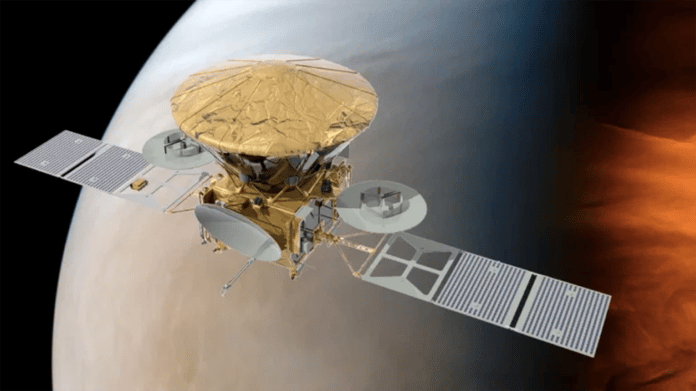There will be no foreign instruments on board the Russian Venera-D mission, which is scheduled for launch in 2029. Due to the political situation, the scientific equipment complex will not include two Japanese cameras and a spectrometer Italian, Russian media told the Space Research Institute of the Russian Academy of Sciences.
In 2022, Roscosmos began funding the “Technical Proposal” stage of the Venera-D project to send a Russian mission to Venus. At this stage, foreign instruments for the orbiter were offered as part of the scientific equipment complex: the Japanese LIR camera operating in the thermal spectral range of 8-12 μm and the three-channel IR2R camera in the near region IR of the spectrum, as well as the Italian infrared spectrometer VENIS for the regional spectrum 2-5 microns.
As Lyudmila Zasova, head of the Planetary Atmosphere Spectroscopy Laboratory at the Space Research Institute of the Russian Academy of Sciences, told Russian media, the R&D stage of Venera-D’s preliminary design has started in 2023. “Proposed foreign-made devices are not included in scientific equipment due to the current political situation. One of the scientific losses associated with this is the failure of cloud layer mapping lower part of Venus, which is supposed to study the dynamics of the atmosphere under a thick layer of clouds. The problem will be solved by other methods, ”explained Zasova.
Now the complex of scientific equipment “Venera-D” is entirely Russian. It includes modern original instruments, in particular those making it possible to study the dynamics of the lower atmosphere, such as a millimetric radiometer on the orbiter. It will explore the lower atmosphere remotely up to the surface. “For the first time, the Venus-D orbiter will monitor the atmosphere of Venus from the surface up to 100 km altitude, both day and night,” Zasova added.
The mission to the second planet of the solar system should be sent in 2029 (2031) from the Vostochny cosmodrome using the Angara-5 rocket. According to plans, the Venera-D complex will fly to the planet, which will include an orbital and landing vehicle and two atmospheric modules. Previously, the United States was supposed to participate in the project, the mission was developed jointly with NASA with the inclusion of long-lived (up to 120 days) science stations on the surface.
Read the Latest Ukraine War News on The Eastern Herald.


